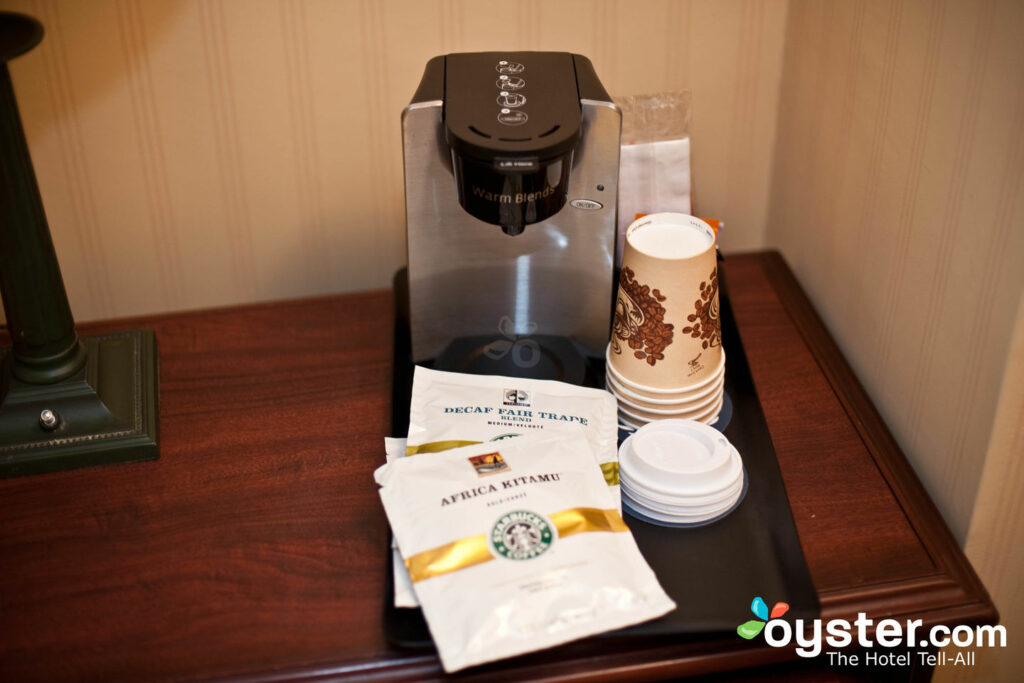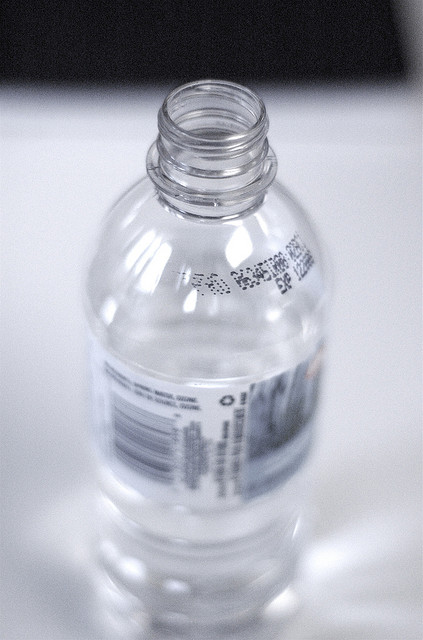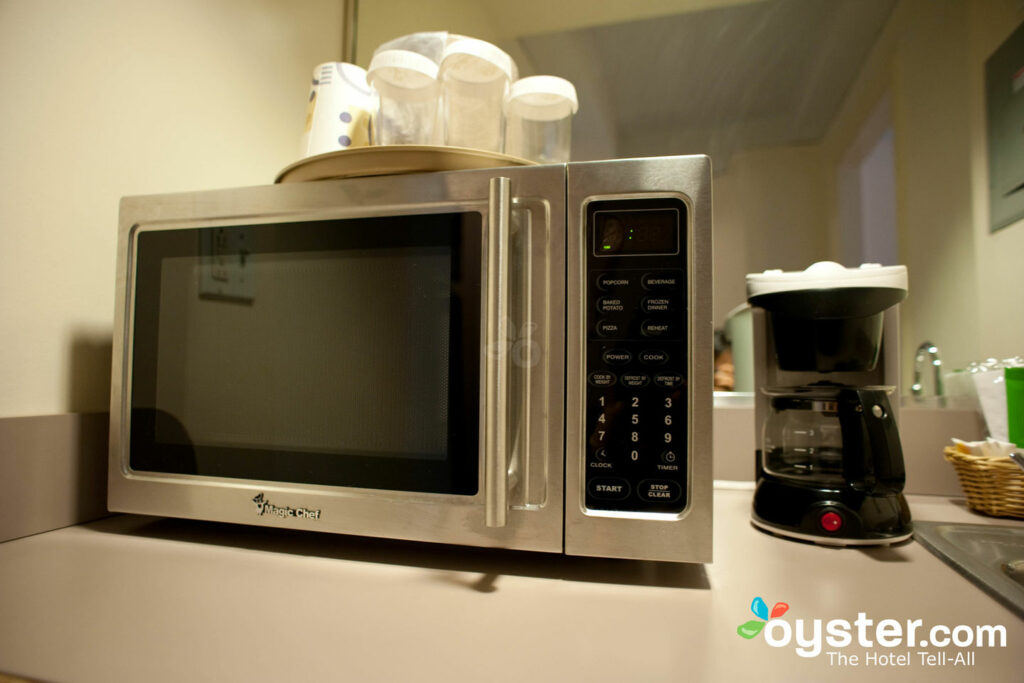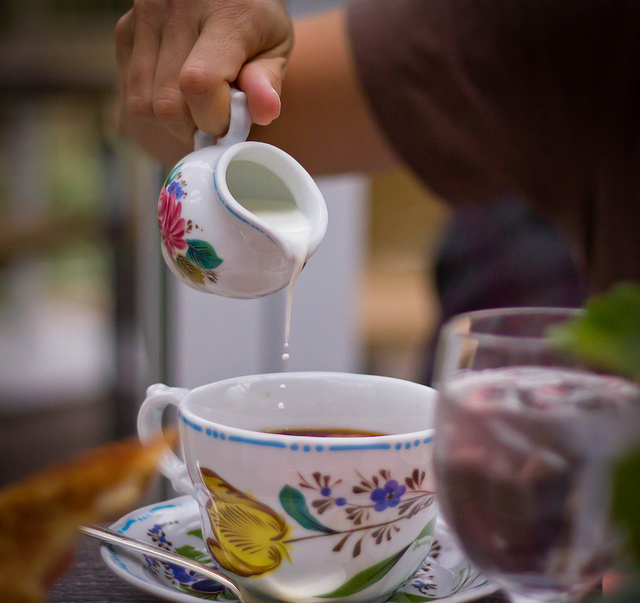The words "hotel coffee" are more than enough to strike fear in the hearts of serious coffee lovers. While some hotels are switching over to newer coffee makers like Keurig systems and others offer fancy provisions like in-room espresso machines, the standard in most is still the automatic drip coffee maker. Combine that with those plastic packets of coffee sitting out, and chances are, you're going to get one mediocre cup of coffee. But there are some small steps you can take to noticeably improve the taste. Short of bringing your own beans, grinder, and French press on your travels (hey, we wouldn't judge!), here's how to make the most of hotel coffee.
Notice: Undefined offset: 4 in /nas/content/live/stagingstmllc/wp-content/plugins/smartertravel-shared/includes/ads/includes/api.php on line 92
Notice: Undefined offset: 5 in /nas/content/live/stagingstmllc/wp-content/plugins/smartertravel-shared/includes/ads/includes/api.php on line 92
Notice: Undefined offset: 6 in /nas/content/live/stagingstmllc/wp-content/plugins/smartertravel-shared/includes/ads/includes/api.php on line 92
Notice: Undefined offset: 4 in /nas/content/live/stagingstmllc/wp-content/plugins/smartertravel-shared/includes/ads/includes/api.php on line 98
Notice: Undefined index: pass_through_args in /nas/content/live/stagingstmllc/wp-content/plugins/smartertravel-shared/includes/ads/includes/api.php on line 158
Notice: Undefined index: wrapper in /nas/content/live/stagingstmllc/wp-content/plugins/smartertravel-shared/includes/ads/includes/api.php on line 159
Wipe the coffee maker down, and run water through it once.

Wash the coffee maker well. Coffee usually leaves oil behind on surfaces of the equipment, which can lend a funky taste to your batch if it’s not washed well. Running vinegar through the machine is super effective for cleaning, but in the absence of that, a pre-brew cycle of just water is the next best option. Jonathan Riethmaier, co-founder of New Orleans Coffee and Bread and creator of District Bean, says that running the machine without coffee also helps the unit reach the proper temperature for a better brew.
Use bottled or filtered water.
Darryl Hodgins via Flickr
Coffee is only as good as what’s in it, so start with quality water. Riethmaier uses bottled or filtered water, instead of tap. “Municipal water commonly includes substances in addition to H20, including calcium, chlorine, fluoride, iron, sulfates, and even micro-organisms,” he explains. “Many of these substances may go unnoticed when drinking water out of the tap, but they can create unwanted flavors when combined with the compounds in coffee.” Tap water isn’t completely off-limits, though. Good tap water — say, for example, in New York City — makes for good coffee.
Heat the water before pouring it into the coffeemaker.

Hot water is crucial to making coffee, and that’s where many coffeemakers fall short. Water that’s not hot enough produces thin coffee with a weak flavor. The National Coffee Association recommends heating water to “195 to 205 degrees Fahrenheit for optimal extraction.” Running water through the machine once, like we mentioned before, should help. You can also avoid a weak brew by first boiling room temperature water in an in-room microwave, or if it’s available, a water kettle. Let the water rest for a moment before using it, though; water that’s too hot will burn your coffee, turning it bitter.
Add milk or cream.
Dave Dugdale via Flickr
“Remember that milk or cream can be your friend,” Riethmaier advises. He explains that either one can work wonders for “dulling unwanted tastes such as bitterness or roasty notes,” and creating “buttery, creamy flavors and a caramel-like aroma” in your coffee. While full fat or cream is best, even low fat milk helps.
All products are independently selected by our writers and editors. If you buy something through our links, Oyster may earn an affiliate commission.